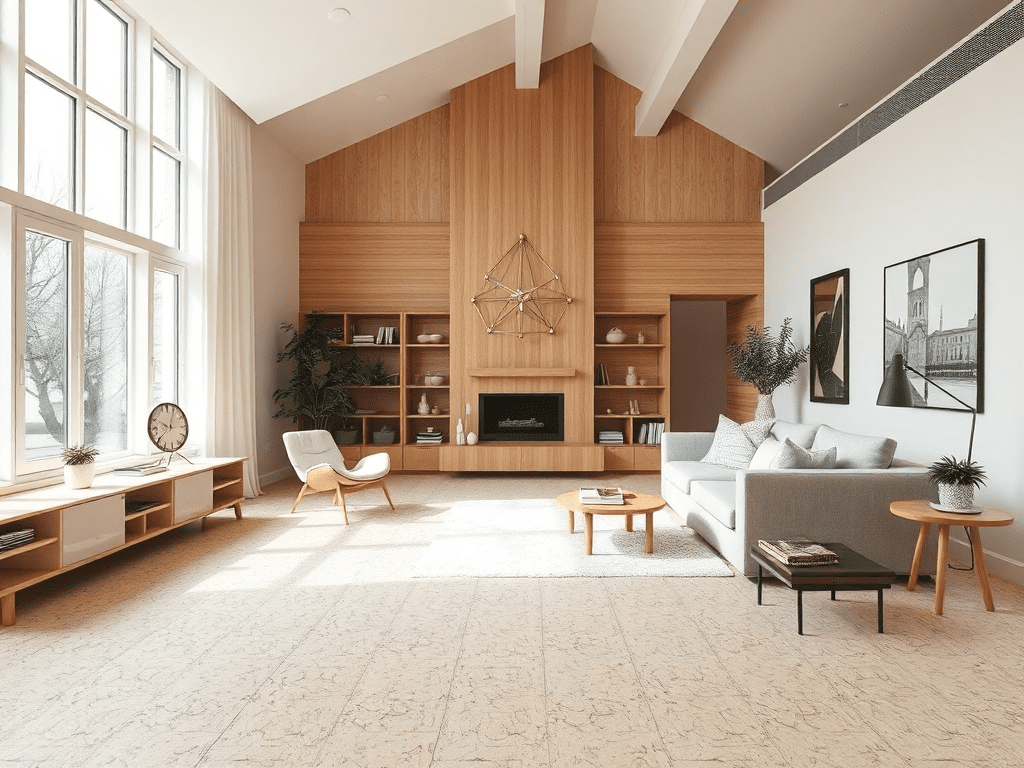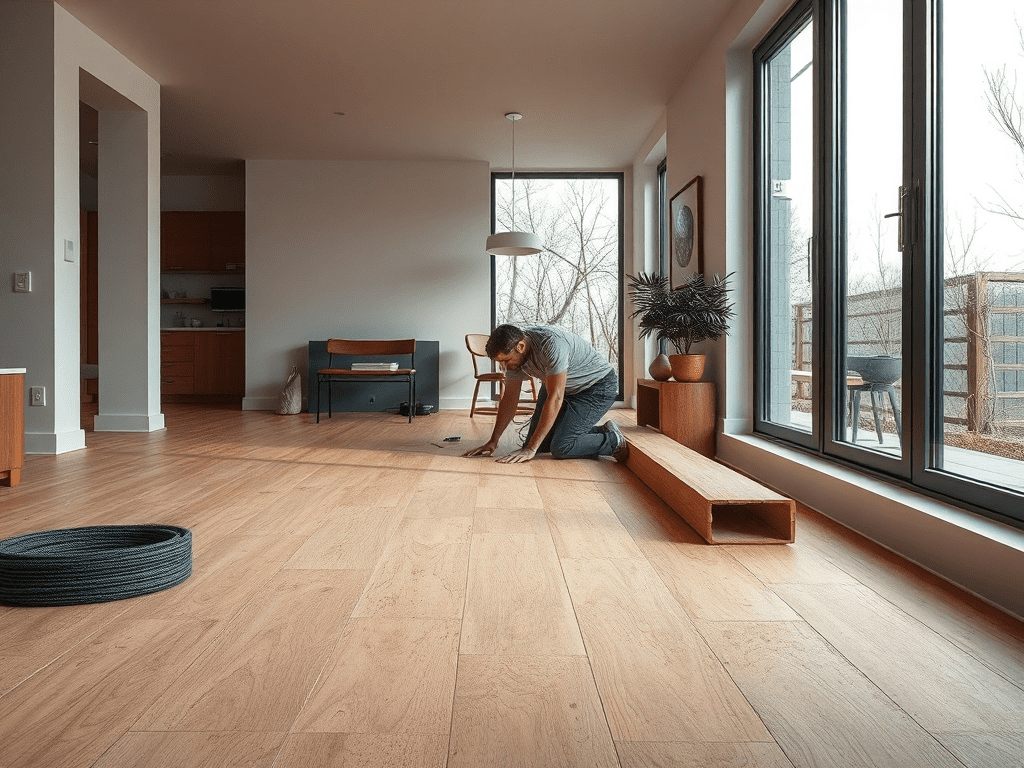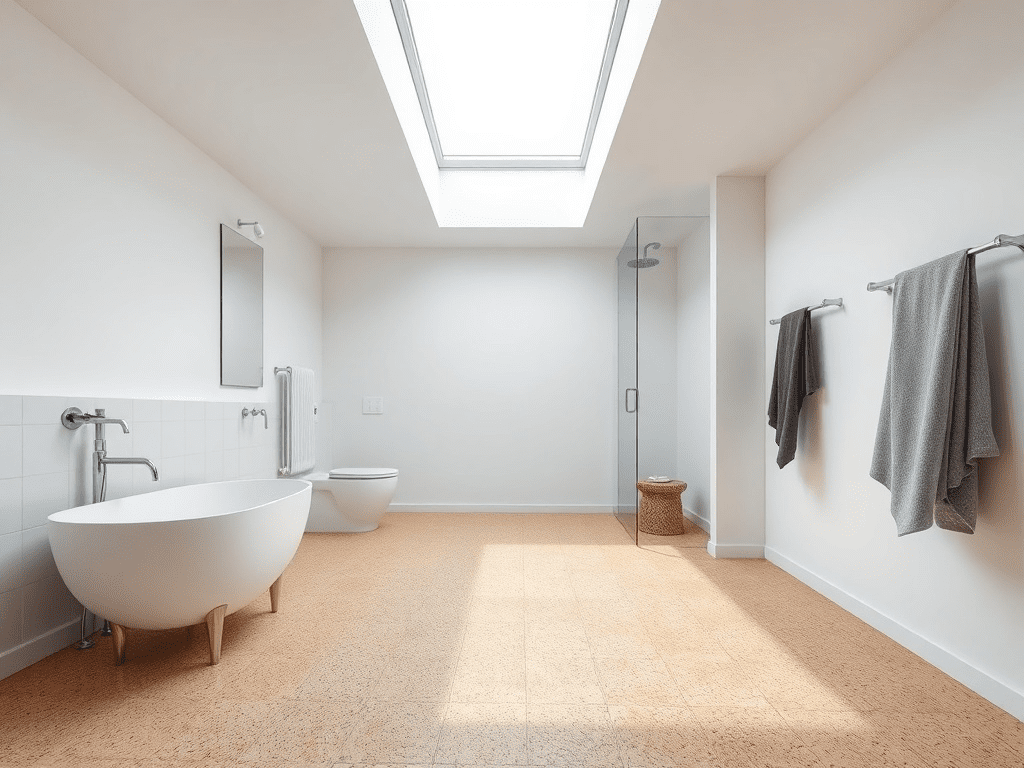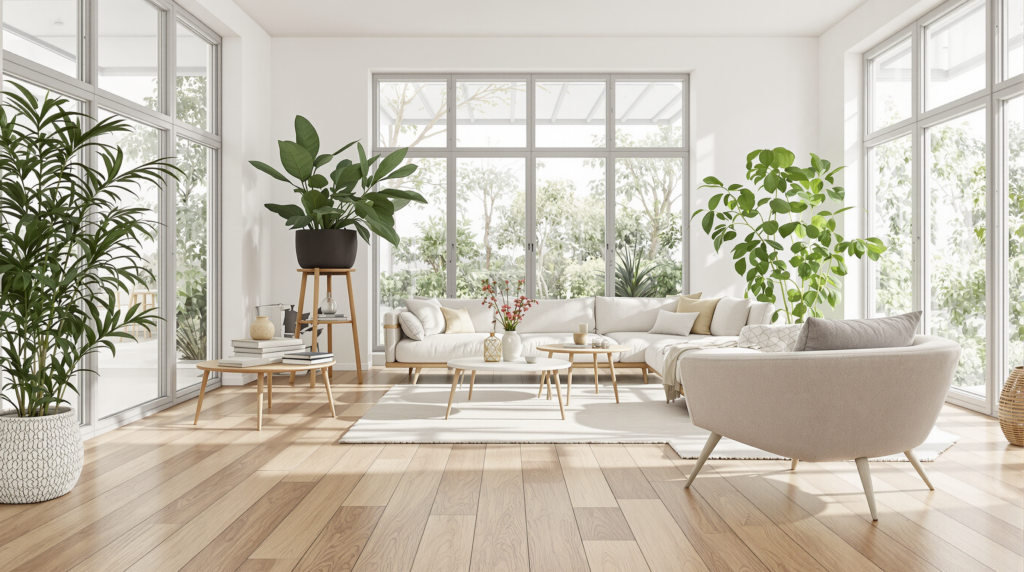Discover the transformative potential of cork flooring with our expert interior design guide. More than just a flooring option, cork offers a unique blend of sustainability, comfort, and style, making it an increasingly popular choice for homeowners and designers alike. From its eco-friendly properties to its natural warmth and sound-dampening qualities, a cork flooring interior design guide can unlock a world of possibilities for creating stunning and functional spaces.

What Does a Cork Flooring Interior Design Guide Cover?
A comprehensive cork flooring interior design guide delves into various aspects of this versatile material, providing you with the knowledge to make informed decisions. It covers everything from understanding the different types of cork flooring and their installation to exploring design aesthetics and maintenance tips. Let’s explore the key areas a reliable guide will address.
Understanding Cork Flooring Types
Cork flooring comes in several forms, each offering unique benefits and aesthetic qualities. The most common types include cork tiles, cork planks, and cork rolls. Cork tiles are typically square or rectangular and are glued down to the subfloor. Cork planks, similar to hardwood, often feature a click-lock system for easier installation. Cork rolls offer a seamless solution, ideal for large areas or spaces where moisture is a concern. A cork flooring interior design guide vs hardwood comparison can highlight these distinctions further.
Installation Techniques: How to Install Cork Flooring Interior Design Guide
Proper installation is crucial for the longevity and performance of your cork floor. A detailed guide will walk you through the process, whether you’re opting for a glue-down, click-lock, or floating installation. It will also highlight the importance of subfloor preparation, moisture testing, and acclimation to ensure a successful outcome. Incorrect installation can lead to problems like buckling, gapping, or mold growth, so following expert advice is essential.

Design Aesthetics: Cork Flooring Interior Design Guide with Modern Aesthetic
Cork flooring’s natural texture and warm tones can complement a wide range of interior design styles, from minimalist modern to rustic farmhouse. Its versatility extends to color options as well, with natural cork shades ranging from light beige to rich brown, and the possibility to stain or paint cork for a custom look. A good guide will showcase examples of how cork flooring can be incorporated into various rooms, creating inviting and stylish spaces. For those seeking a cork flooring interior design guide with modern aesthetic, consider pairing it with clean lines, neutral colors, and minimalist decor.
Maintenance and Care
Maintaining cork flooring is relatively simple, requiring regular sweeping or vacuuming to remove dirt and debris. For deeper cleaning, a damp mop with a mild detergent is usually sufficient. It’s important to avoid excessive moisture and harsh chemicals, as these can damage the cork. Applying a sealant or finish can also help protect the floor from wear and tear. A cork flooring interior design guide addressing moisture issues will offer specific preventative measures and cleaning techniques.
Answering Your Common Questions About Cork Flooring
What is cork flooring and why is it a good choice for interior design?
Cork flooring is made from the bark of the cork oak tree, making it a renewable and sustainable resource. It’s a good choice for interior design because it’s comfortable underfoot, provides sound insulation, and offers a unique, natural aesthetic.
How does cork flooring contribute to a sustainable interior design?
Cork is a highly sustainable material because the bark can be harvested without harming the tree. It’s also biodegradable and recyclable, making it an environmentally friendly flooring option. Choosing sustainable cork flooring interior design guide choices is crucial for environmentally conscious consumers.
What are the different types of cork flooring available for interior design projects?
As mentioned earlier, the main types are cork tiles, cork planks, and cork rolls. Each offers different installation methods and aesthetic qualities to suit various design preferences and project requirements.
Can cork flooring be used in kitchens and bathrooms, and what precautions should be taken?
Yes, cork flooring can be used in kitchens and bathrooms, but it’s important to take precautions to prevent moisture damage. Sealing the floor properly and cleaning up spills promptly are essential. A cork flooring interior design guide for kitchens and bathrooms will emphasize these protective measures.

What are some popular interior design styles that complement cork flooring?
Cork flooring complements a variety of styles, including Scandinavian, modern, rustic, and bohemian. Its natural texture and warm tones create a welcoming and versatile foundation for any space.
How do you properly maintain and clean cork flooring to ensure its longevity?
Regular sweeping and damp mopping with a mild detergent are usually sufficient. Avoid harsh chemicals and excessive moisture. Applying a sealant or finish can also help protect the floor.
What is the typical cost of cork flooring installation in an interior design project?
The cost of cork flooring installation varies depending on the type of cork, the size of the space, and the complexity of the installation. However, cork is often a cost-effective choice compared to hardwood or other premium flooring options. Consider a cost-effective cork flooring interior design guide to help you budget.
Where can I find inspiration for using cork flooring in interior design?
You can find inspiration in design magazines, online platforms like Pinterest and Houzz, and from interior designers who specialize in sustainable materials.
Benefits Beyond Aesthetics: Why Choose Cork?
Beyond its aesthetic appeal, cork flooring offers several practical benefits. Its natural elasticity provides cushioning and reduces impact noise, making it comfortable underfoot and ideal for homes with children or pets. Cork is also naturally fire-resistant and hypoallergenic, contributing to a healthier and safer indoor environment. The benefits of cork flooring interior design guide in living rooms include enhanced comfort and sound absorption.
Conclusion: Embrace the Potential of Cork
Cork flooring is a versatile and sustainable choice that can elevate your interior design. With its unique blend of style, comfort, and eco-friendliness, it’s a material worth considering for any project. By consulting a cork flooring interior design guide, you can unlock its full potential and create a space that is both beautiful and sustainable.
For more information on cork flooring and its benefits, visit the Cork Quality Council. To understand the sustainable aspects, refer to reports by the World Wildlife Fund regarding sustainable forestry. Details on installation methods can be found here.
| Feature | Pros | Cons |
|---|---|---|
| Comfort | Cushioned, warm underfoot | Can be susceptible to dents from heavy furniture |
| Sustainability | Renewable resource, biodegradable | Sourcing practices vary; look for certified cork |
| Aesthetics | Unique texture, versatile styles | Limited color options in natural cork |
| Maintenance | Easy to clean | Requires sealing to prevent moisture damage |
| Cost | Generally cost-effective | Installation costs can vary |

